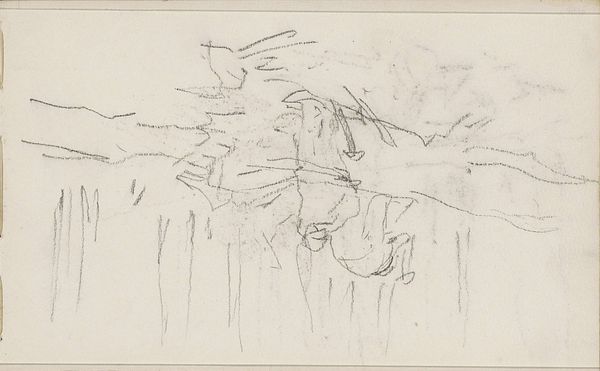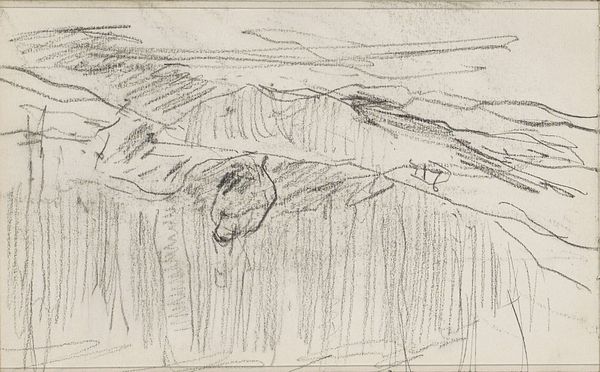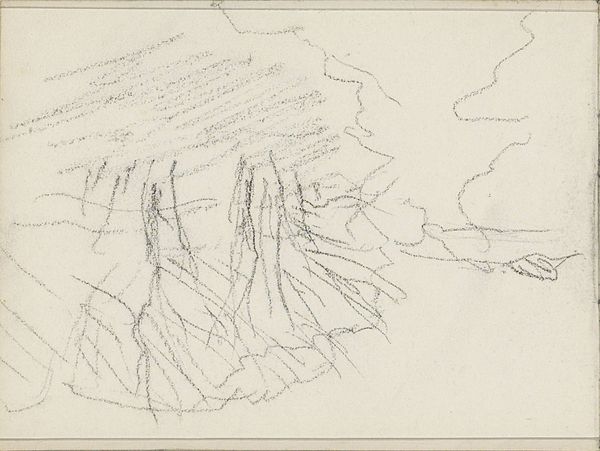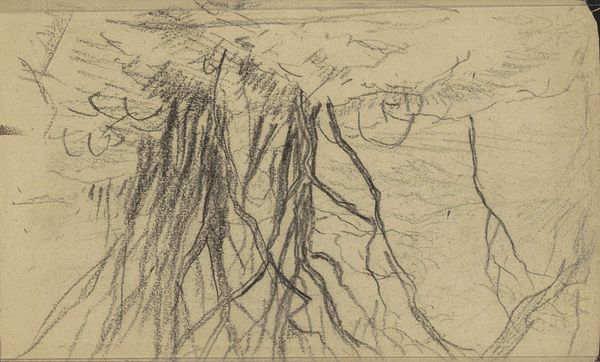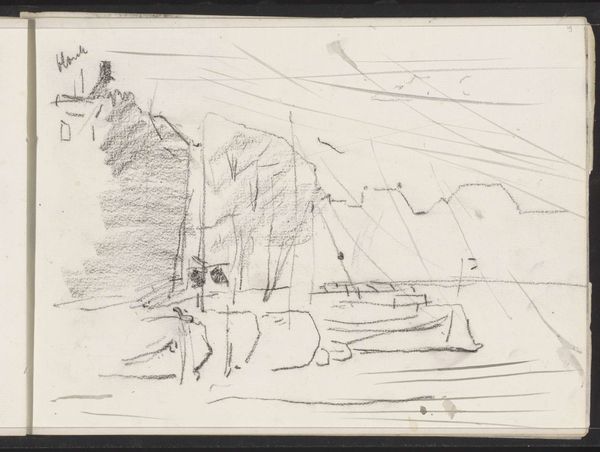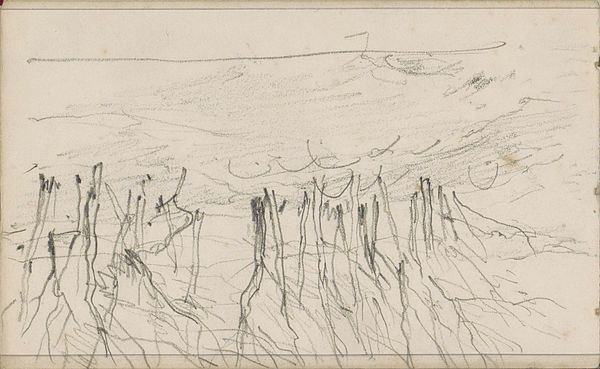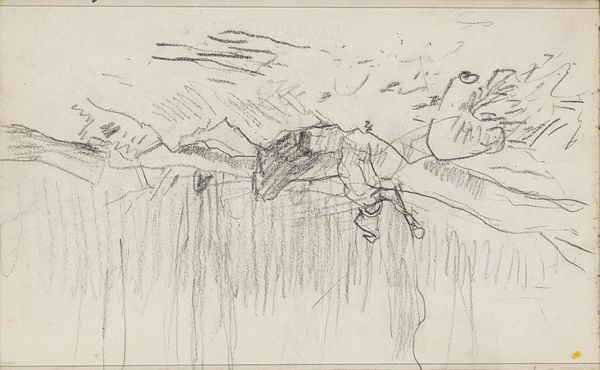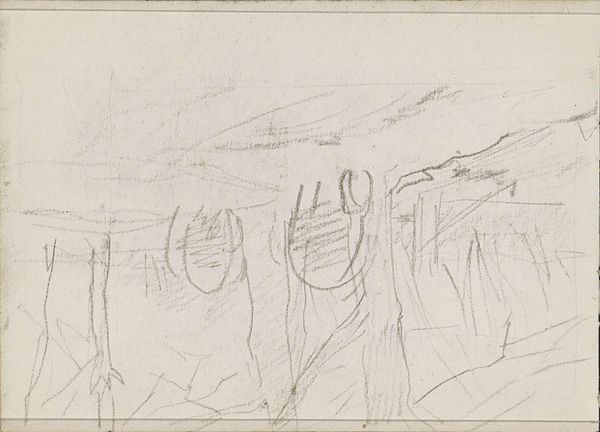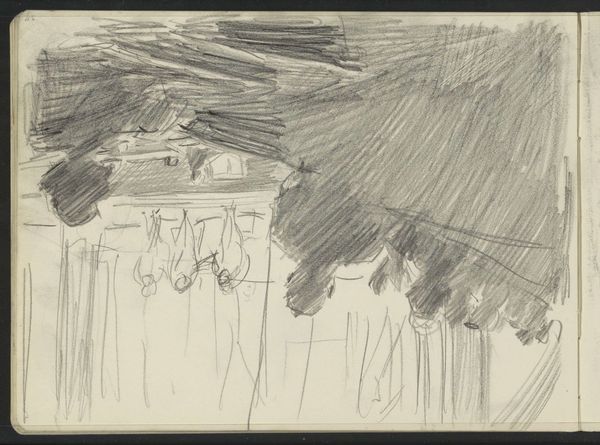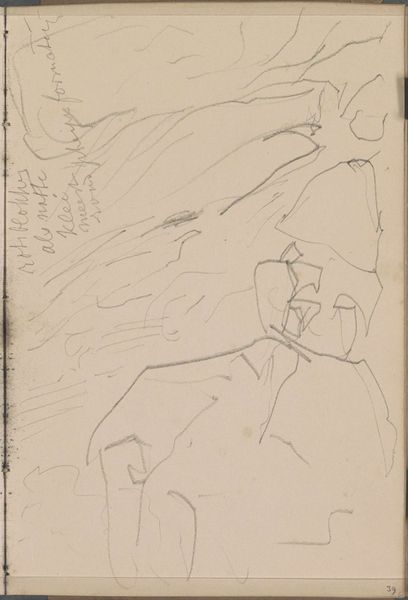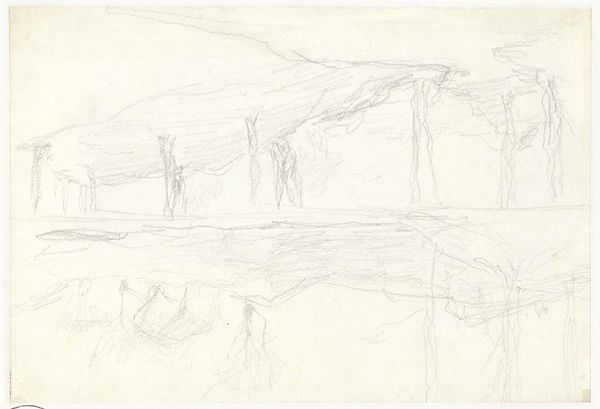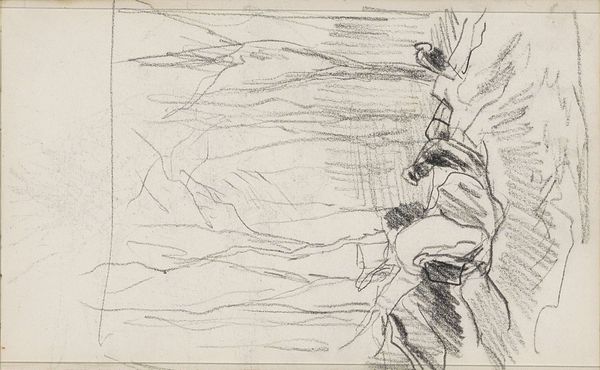
drawing, pencil
#
drawing
#
amateur sketch
#
light pencil work
#
dutch-golden-age
#
incomplete sketchy
#
landscape
#
personal sketchbook
#
sketchwork
#
ink drawing experimentation
#
pen-ink sketch
#
pencil
#
sketchbook drawing
#
sketchbook art
#
realism
#
initial sketch
Copyright: Rijks Museum: Open Domain
Editor: This pencil drawing, titled "Woodcutters by a felled tree in a forest", was created by Anton Mauve sometime between 1848 and 1888. It's currently held in the Rijksmuseum collection. It feels incredibly raw and immediate, almost like we're peering into the artist's personal sketchbook. What strikes you most about this piece? Curator: Seeing this work through the lens of social history, I'm drawn to how it reflects the evolving relationship between humans and the natural world. Remember that this was a period of increasing industrialization. Do you think the artist viewed logging positively, as progress? Or perhaps more critically, noting a disruption to traditional rural life? Editor: It's hard to tell! It could be either, or perhaps both simultaneously. The sketchiness makes it seem almost unfinished, as if the artist was still grappling with the subject matter. It doesn't feel celebratory. Curator: Precisely. Now, consider the socio-economic context of the Dutch art world. Landscapes were increasingly popular, but not always appreciated or valued. Would a sketch like this have been intended for public display, or simply as a study? And how would its reception differ based on the patron's class and political views? Editor: Given that it's in a sketchbook style, it feels like it could be more of a private, preparatory study. It may be interesting to view how Anton’s socioeconomic background and social positioning may have shaped his perception of landscape. Curator: Exactly! These drawings weren't merely about rendering pretty scenes; they often reflected broader cultural and political anxieties around industrial expansion and labor. By studying such drawings, we uncover a lot. Editor: That’s such a great way of considering it! It highlights how something that appears like a simple nature scene can be loaded with deeper societal meanings. Thanks! Curator: My pleasure. It highlights the fact that even preliminary sketches offer a glimpse into the cultural landscape of their time.
Comments
No comments
Be the first to comment and join the conversation on the ultimate creative platform.
